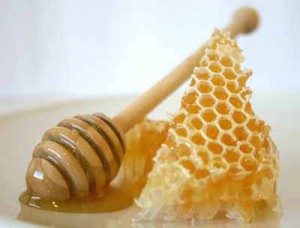Royal Jelly – Amazing Health Benefit of Bee Products
The best know among the bees magical creations is honey, which is high on the list of comfort foods. We’ve all grown up on dollops of honey on toast, with every luscious mouthful exuding the scent of a flower, trickling like liquid sunshine. And beauticians will tell you that a honey face-pack will leave your skin with the best afterglow. But then, that’s not the best a bee can do. Buried deep in the honey comb is another beauty secret. It is called royal jelly, a honey-bee secretion that is used in the nutrition of the larvae. It is secreted from the hypo-pharyngeal glands in the heads of young workers and used (apart from other substances) to feed all of the larvae in the colony, including those destined to become workers. If a queen is needed, the hatchling will be fed only royal jelly – and in large quantities for the first four days of its growth.
This rapid, early feeding triggers the development of the queen which (fed only on royal jelly for her entire life) reaches maturity five days before the worker bees; and when she is fully grown, her weight is double that of the worker bee. The life span of the worker bee is about 35 to 40 days, while the queen lives five to six years and is extremely prolific. She is fertilized once, and from that moment on can lay as many as three thousand eggs a day during the season. And incredible as this may seem, she can hold those fertility levels for the next five years.
Needless to say, royalty with such stupendous energy levels and vitality commands respect. So does the food in her larder! This rich concentrated food is not just for the bees. It is packed with remarkable amounts of proteins, lipids, glucides vitamins, hormones, enzymes, mineral substances, and vital factors that act as biocatalysts in the cell regeneration process within the human body.
Although some of the elements found in Royal Jelly are in miniscule micrograms, they can still act supremely with co-enzymes as catalysts or can act in synergy. Royal Jelly contains acetylcholine (a shortage of this substance in our bodies makes us susceptible to MS, Alzheimer’s Parkinson’s and other nerve diseases) amino acids, lipids, and carbohydrates. This food is also anti-bacterial, anti-viral, and antibiotic. It is especially good for the respiratory, skeletal, nervous, reproductive, endocrine, cardiovascular, immune, and cellular systems.
The Jelly also helps to keep the hormones and metabolic functions regulated and aids in cell regeneration, a function that deteriorates as we age. It helps maintain skin tone and full hair, as well as treat skin problems. It is an energy enhancer for all ages, making it invaluable in treating chronic fatigue, sexual impotency, and revitalizing the body after a serious illness, surgery or trauma.
It mimics the effect of amphetamines without any of the side effects or problems associated with them. Since this substance stimulates cell regeneration, it is believed to be invaluable in dealing with the brain’s chemistry. The jelly is known to have lowered serum cholesterol and lipid counts besides preventing arteriosclerosis. It has been shown to be beneficial in protecting the liver, building tissue and muscle, enhancing bone growth ad sexual vitality, stimulating memory, regulating weight, and speeding up wound healing. So where do you get your hands on this ‘manna? Naturally, you can’t take a bowl and borrow it from the neighborhood Queen Bee. You’ll have to contend with a swarm of soldier bees.
Royal Jelly is farmed in apiaries simulating colonies with movable frame hives to produce queen bees. It is collected from each individual queen cell when the larva is about four days old because these are the only cells in which large amounts are deposited; when royal jelly is fed to worker larvae, they consume it as it is produced, while the cells of queen larvae are “stocked” with royal jelly much faster than the larva can consume it. Therefore, only in queen cells is the harvest of royal jelly practical. During a season of five to six months, a well-managed hive can produce approximately 500g of royal jelly. Since the product is perishable, producers must have immediate access to proper cold storage (e.g., a house hold refrigerator or freezer) in which the royal jelly is stored until it is sold or conveyed to a collection centre. This product is combined with honey for preservation as it spoils easily on its own. So, the next time you’re looking for that fountain of youth, head to the nearest honeycomb and see if they’ll share their ‘bee’uty gel with you! Or you could buy it off the market for around $20.

